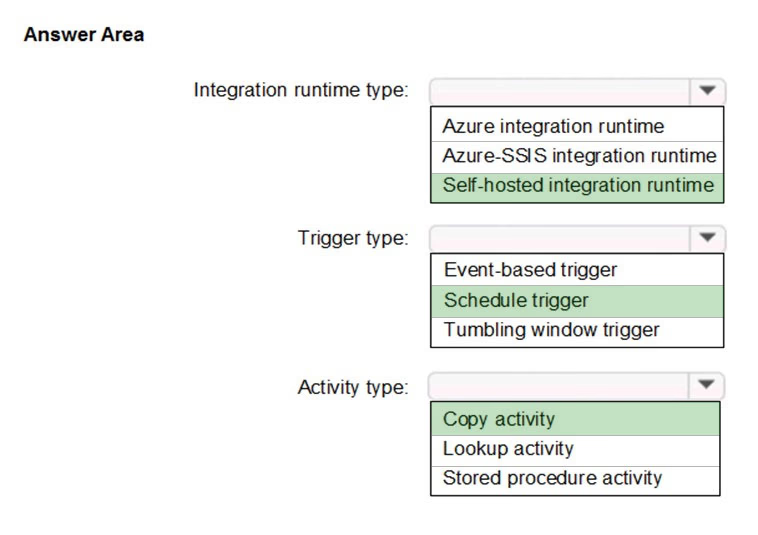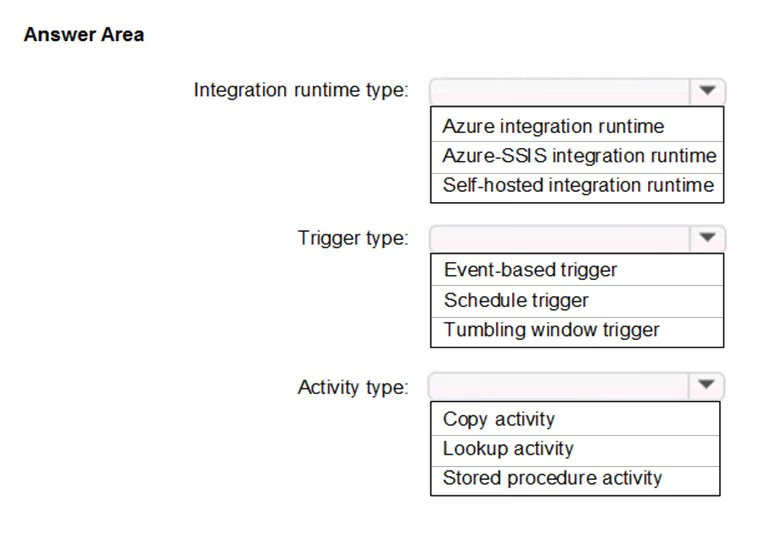
Box 1: Self-hosted integration runtime
A self-hosted IR is capable of nunning copy activity between a cloud data stores and a data store in private network.
Box 2: Schedule trigger -
Schedule every 8 hours -
Box 3: Copy activity -
Scenario:
✑ Customer data, including name, contact information, and loyalty number, comes from Salesforce and can be imported into Azure once every eight hours. Row modified dates are not trusted in the source table.
✑ Product data, including product ID, name, and category, comes from Salesforce and can be imported into Azure once every eight hours. Row modified dates are not trusted in the source table.

